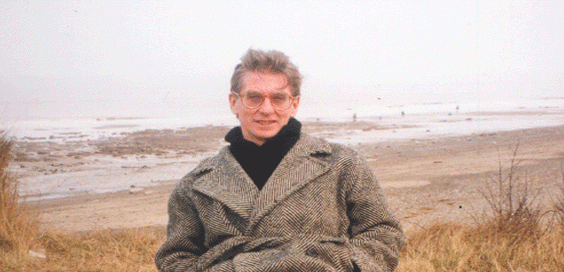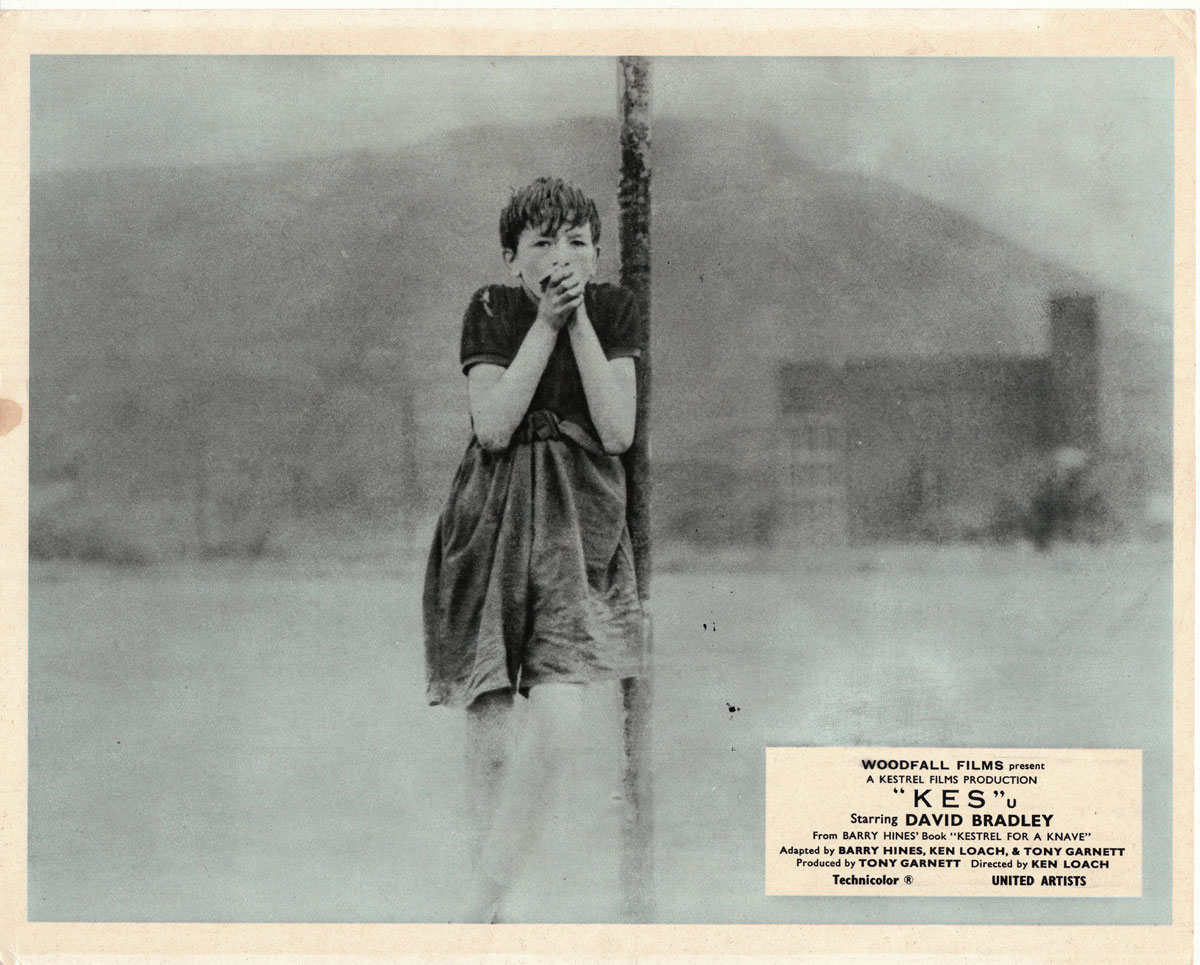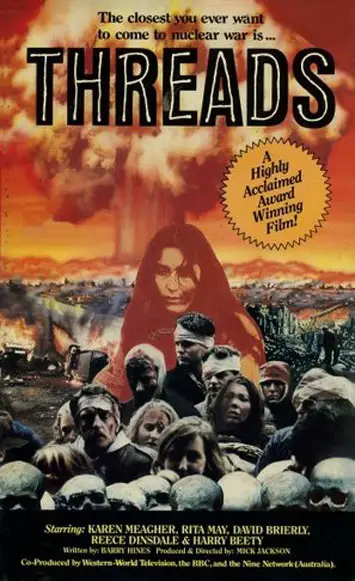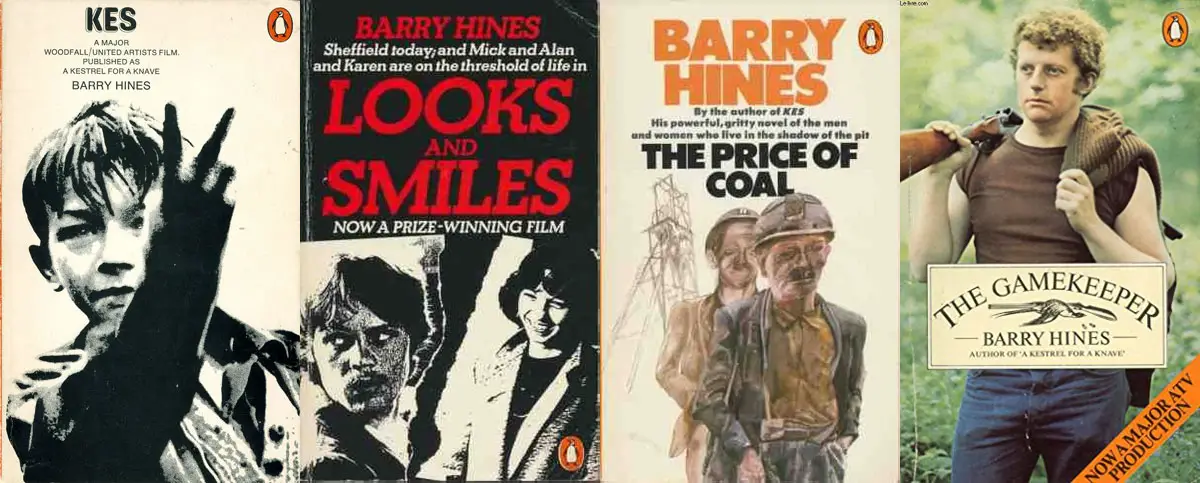An Interview with Barry Hines – his last interview

Homecoming Hero
Barry Hines is one of Yorkshire’s greatest writers. His novel, A Kestrel For a Knave, and accompanying film, Kes, are iconic. He won a BAFTA for Threads, his unflinching depiction of a nuclear attack on Sheffield. Other works, Looks and Smiles, The Price of Coal and The Gamekeeper, have also been adapted for film and television. Here, in his last ever interview, he talks exclusively to On: Magazine’s Nigel Armitage about the legacy of Kes, returning to live in the village he grew up in and saying ‘no’ to Walt Disney…
There are certain images from stories that we’ve read in books, or watched in films, which are not only unforgettable but burn brightly in our imagination, like embers of coal.
One such image is of a young lad called Billy Casper. He’s standing in a field in a South Yorkshire town, whistling and swinging a line baited with a beef scrap. “Come on, Kes! Come on then.” This young lad, unappreciated at home and at school, in a bleak 1960’s industrial landscape, has trained a hawk. ‘Kes’ is the one thing of untamed beauty in his otherwise mean surroundings.
Another image, perhaps the most hilarious in the history of literature, is of a ruddy-faced sports-master (Mr Sugden) in Manchester United colours. He’s ‘Bobby Charlton’ – “Law’s in the wash this week” – and he’s playing football with a bunch of kids. And he’s the biggest cheating bully on the pitch. “Don’t argue with me, lad! And get that ball fetched!” (Oh, how we miss you, Brian Glover!)
“I don’t bother to contradict them”
Both images are from the same story – the novel A Kestrel for a Knave (1968) by Barry Hines. Along with director Ken Loach and producer Tony Garnett, Barry adapted his novel for the big screen. The film Kes (1969) was the sublime result. Given that the story is now such a part of our collective national consciousness, its place in The Guardian newspaper’s recent ‘1000 Novels Everyone Must Read’ – with Dickens’s A Tale of Two Cities and Orwell’s Animal Farm for company – appears thoroughly fitting. Likewise the top ten ranking of Kes in the British Film Institute’s favourite British films of the 20th century is surely just a case of confirming something that we already knew.
For any lover of literature and film with a Yorkshire bias, the opportunity to ask Barry about this story was something of a dream assignment. He returned to live near to the village of his childhood, Hoyland Common (a few miles south of Barnsley), a couple of years ago. I wonder whether it drives Barry mad that he has spent the last 40 years or so fielding questions about his famous story of the boy and his hawk.
“Since I’ve been back here people talk to me about it a lot. They all seem to know more about it than me. Particularly the film which was made around here. Everybody in the village and their houses and dogs were in it. They also like to tell me who certain characters were based on. I don’t bother to contradict them since it is now part of local history. It has a life of its own outside my control.”

Lobby card from ‘Kes’
Copyright by United Artists and other relevant production studios and distributors
“There’s still a lot of kids like Billy”
It is some achievement that a lot of people studied both the book and film at school and yet still remember the story with such great affection.
“I think that the book has survived as a set text because teachers like using it. It has a lot of possibilities from a teaching point of view. Most kinds of children seem to identify with the story. Northanger Abbey it is not! It should really be out of date now after all these years. But sadly, it’s not. There are still a lot of kids like Billy around. Ken Loach’s film Kes is a sympathetic retelling of the book. It adds value to it. Ken is a wonderful director for any writer to work with. I was very lucky that Tony Garnett the producer and Ken discovered my little book.”
The modesty of the man is striking but his comment that: “sadly…there are still a lot of kids like Billy around” raises the subject of social injustice. It has been an important theme in all of Barry’s writing. But was South Yorkshire life in the 1960s really as grim and downbeat as it is in his story? The adult characters particularly appear irredeemably unkind, even cruel in some cases.
“I think that I painted an accurate picture of what life was like for someone like Billy forty years ago. Looking back, maybe I was not as sympathetic as I could have been to some of the adult characters. Jud, for example [Billy’s loathsome older coalminer brother who ultimately kills ‘Kes’]. He lost a whole week above ground when Billy didn’t put that bet on. However, if I had digressed into sympathy for him and Billy’s Mum about their lives it would have been a different story, wouldn’t it?”
 “Hollywood endings”
“Hollywood endings”
But the story is also has superb comic scenes. We can’t forget, of course, Brian Glover’s towering, outlandish performance as Sugden the sports master in the film version. But what about the headmaster, Mr Gryce? “‘It’s fantastic isn’t it, that in this day and age, in this super-scientific, all-things-bright-and-splendiferous age, that the only way of running this school efficiently is by the rule of the cane.’”
“All my fictional teachers are based on real people. They didn’t know they were funny. But if you go into any pub round here and listen to people reminiscing about their schooldays, those same teachers are still causing glee!”
Parallels can be drawn between Barry’s story and the Billy Elliot film (the clue is in the title) from 2000. But the outcomes of both are very different. Whilst the all grown-up Billy Elliot goes on to debut at the Royal Ballet, there is no such happy ending for the Billy in Kes. He simply buries the dead hawk and goes to bed.
“How often are ‘dreams realised’ in real life? I write about real people and show a section of their life. Without the Hollywood endings which rarely happen outside Hollywood. My memory is failing me these days and I cannot remember the exact details, but Walt Disney offered to make Kes. On the condition that the hawk recovered. Should we have sold out? I know which way would always be right for me.”
“Quiet acceptance”
And it is the lives of those in the working-class communities of the old West Riding of Yorkshire (1889 – 1974) that Barry has represented throughout his writing. He’s not sentimental or nostalgic about what he calls the ‘filthy, dangerous work’ of coal-mining around which these communities often centred.
“Those communities are still in existence, but in a different form. The fact that members of every family worked down the pit forged strong bonds. These are gradually eroding with the passing of each generation, and with greater mobility among the young. Young families are better off now and the environment is cleaner and healthier. That old tight community spirit has gone to some degree, but pit villages in South Yorkshire are still lovely friendly places to live in.”
It was the community that he knew when he was growing up and to which he has now returned with his wife Eleanor: “It’s like I have never been away. The first time I went in the Club, after nearly forty years, the blokes just said ‘ayup Barry’ and went back to their cards. That quiet acceptance makes me feel at home. It is very pretty round here now that all the tips have been landscaped and there are nice walks.”
“I felt like an icon then”
Although physically still in great shape, Barry is diagnosed with Alzheimer’s Disease. His memory is not all that it was. His condition is not so advanced, however, as to prevent his voice and views coming through loud and clear. It is the same voice, the same clarity of thought, which characterises all his writing. So how does it feel to be a Yorkshire literary icon?
“Not too bad, as they say round here. People do stop me, to talk, all the time, so I am not on a pedestal. The main thing for me is to feel that I have represented them well. I remember years ago when The Price of Coal [originally a novel published in 1979 about life at a colliery] was on television one evening. When I got on the bus in Chapeltown the next day it was full of miners coming off shift. I walked down the aisle and they just looked and said nothing. I’m scared to death until one man appointed himself spokesman and said ‘that were alreight, Barry’. I felt like an icon then, I can tell you!”
Frequently Asked Questions about Barry Hines
Who was Barry Hines?
Barry Hines was an English author, playwright, and screenwriter known for his works depicting the lives of the working class in Northern England. He wrote the famous novel “A Kestrel for a Knave,” which was adapted into the film “Kes.”
What are some notable works of Barry Hines?
Apart from “A Kestrel for a Knave,” Hines wrote several other significant works including “The Price of Coal,” “Looks and Smiles,” and the television film “Threads.”
What themes did Barry Hines explore in his works?
Hines’ works often explored the political and economic struggles of the working class, focusing on themes like unemployment, education, and industrial conditions.
What was “Kes” about?
“Kes” is a film adaptation of Hines’ novel “A Kestrel for a Knave,” telling the story of a young boy who finds solace in training a kestrel amid his troubled life in a mining village.
Did Barry Hines receive any awards for his works?
Yes, Barry Hines received several accolades, including a BAFTA for the television film “Threads” and recognition for his screenplay of “Kes.”
What impact did Barry Hines have on literature and film?
Hines is celebrated for his realistic portrayal of working-class life, influencing both literature and film with his distinct social realist style.











Barry Hines came to Loughborough Grammar School in 1974 to give a talk just before the O level exams – Kes was one of the books studied along with Kim by Rudyard Kipling – brilliant! and ‘As you like it’ by guess who… It was one of my profound moments at the school – to meet a real writer!! It was a joy to read the book especially as I had just just moved to Yorkshire!! I can honestly say I remembered every comment he made of the book and loyally used his quotes and comments in the exam made all the difference to my grade! he also made me a writer for which I will be for ever grateful! Thank you.
I think this one book did more than any other in our generation to encourage British people, who didn’t have degrees in English from Oxford, to write about life. Thanks Barry.
First book I read kestrel for a knave and the best I read my mum took us kids to Doncaster odean cinema to watch the film aways a fan of barrys stuff jimbo
I first used Kes in English teaching while on teaching practice in Exeter in 1977. Thirty-seven years later I’m still using it, now in Sweden at a Gymnasium. Kes, both novel and film, goes down really well with Swedish 17 year-olds, and gives the opportunity to show aspects of Britain (the grimmer side of the 60s, the northern industrial town, the tough school life) that many are unfamiliar with. The book is brilliant to read aloud, and the film never fails to evoke reaction (the PE lesson alone gives great cause for discussion!). So thank you Barry Hines many times over.
Hi Barry, I remember typing your first book on the old underwood typewriter. I was going
Out with Richard at the Time. Love to you and Richard.
Lynn
Hello i am currently in the process of buying a property in Hoyland Common and have been informed its the house he wrote several books in, including Kes, does anybody know if he actually did live in Hoyland Common and write there,,,i would love to talk to him about this property its an amazing place any info would be brilliant thankyou
Lorrraine Fisher in Birdwell Barnsley
I used this review in an essay and loved the film and also the novel. It was such an emotive film I endorse what the other commentators have written, the film had the art of bringing all ages, cultures and sexes the ability to identify with either one or all elements within the story. I remember being so overwhelmed by the ending, when Casper’s older brother Jud brought the bird to an untimely end, and felt so anxious; I felt that part 2 would have been classic if the bird somehow was stunned but came back to life. It never happened but I think this option would have either added to it’s success or left the audience unsatisfied, therefore it was just as well the story left its audiences on the edge their seat’s. I guess the first impact was so enjoyable it has added to it’s popularity and will continue to grace other people the same pleasure and memorable experiences from their own childhoods bringing good old fashion values a place within contemporary society.
i would just like to say kes still makes me smile , not just because of the story but because i recognise the characters from my time at kirk balk school, No names needed ,
Do you recall Barry living in Hoyland Common and if so the house he wrote the books in, i am buying a house he supposed to have wrote several books in any onfo greatly appreciated thanks
Hi Barry
you won’t remember me I attended your talk to an Alnwick writers group , in Northumberland , late 70’s , early 80’s when you gave a reading from your book ,’the Gamekeeper ‘ , at the end I asked a question about the class issues raised by your book and after the reading , with the poet Anne Stephenson ? you came over and talked with me for a couple of minutes , it was such a touching thing of you to do and it will probably always remain with me .
Thank you
You’re agent
David Woodfall
Your novel, A Kestrel for a Knave, has shaped my life.
Thank you Barry Hines for “A Kestral for a Knave”. It is most powerful and beautiful. I am very much reminded of my youth in the farm country where I grew up in Lancaster, Pennsylvania. I walked the fields and woods and watched a Sparrow Hawk coming and going from its hole in a tall dead tree. I coveted that bird.
So I am altogether taken by the writing in this book and it is making me go back to D.H. Lawrence.
I have bought three of these books as Christmas presences. I hope the recipients like it or I am not sure that I should like to speak to them again. I’d appreciate your sending this on to Barry Hines.
Most sincerely,
Barry Thomas (born 1934, so I had this name first)